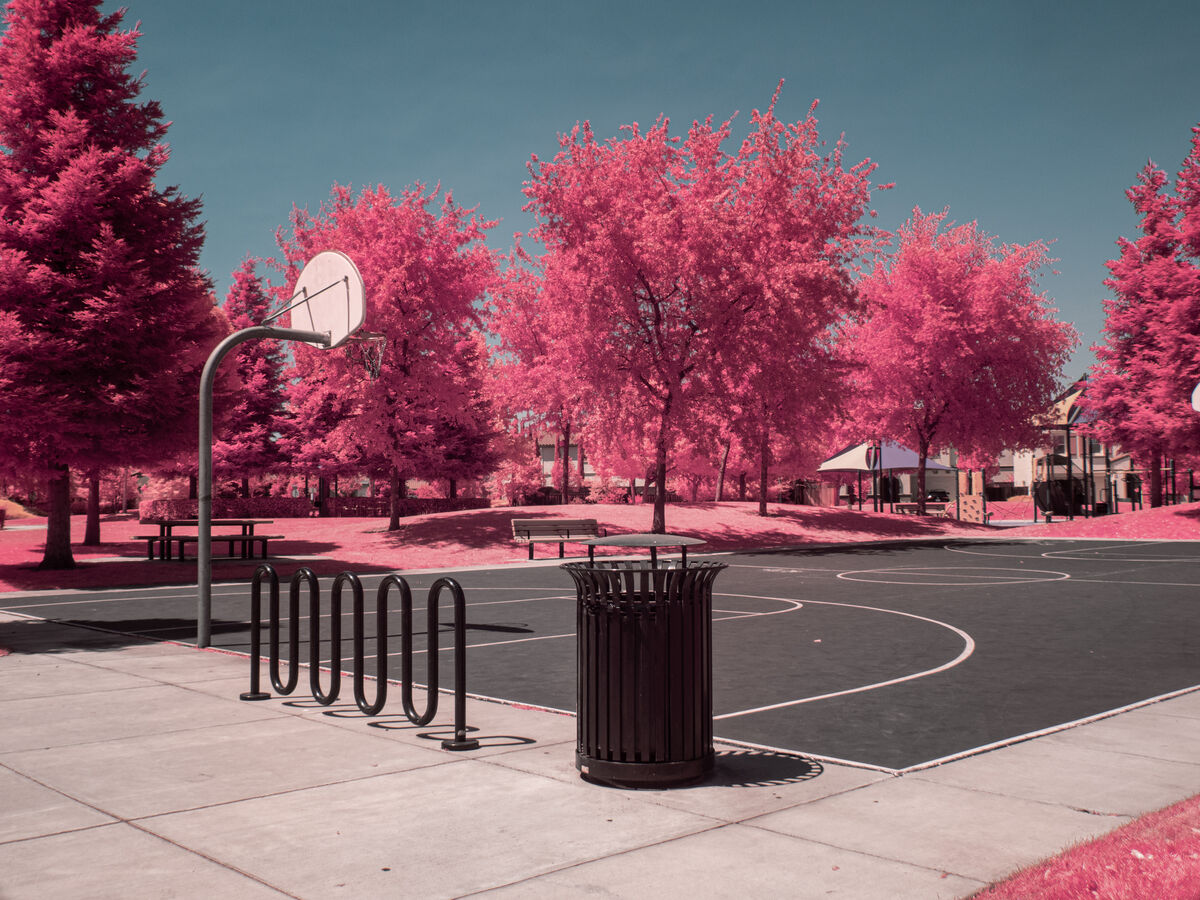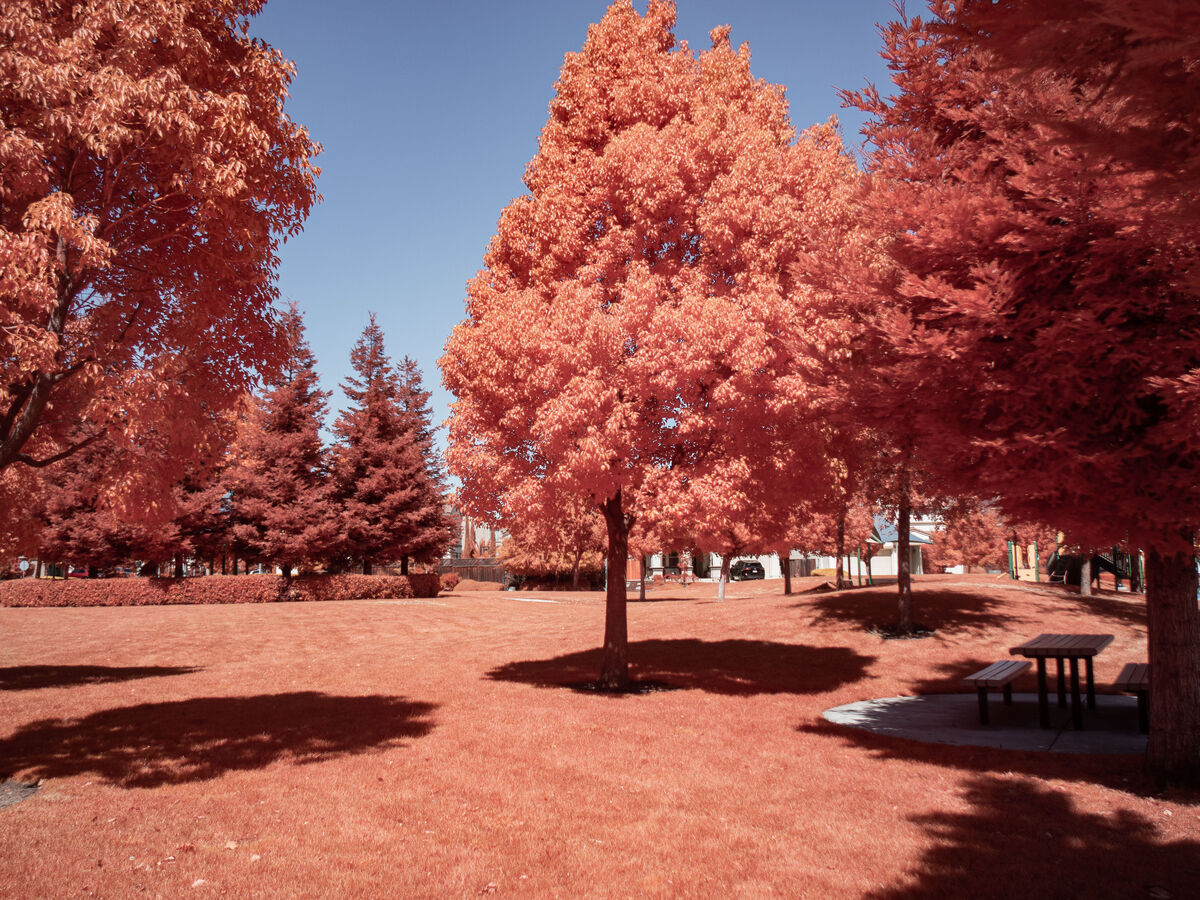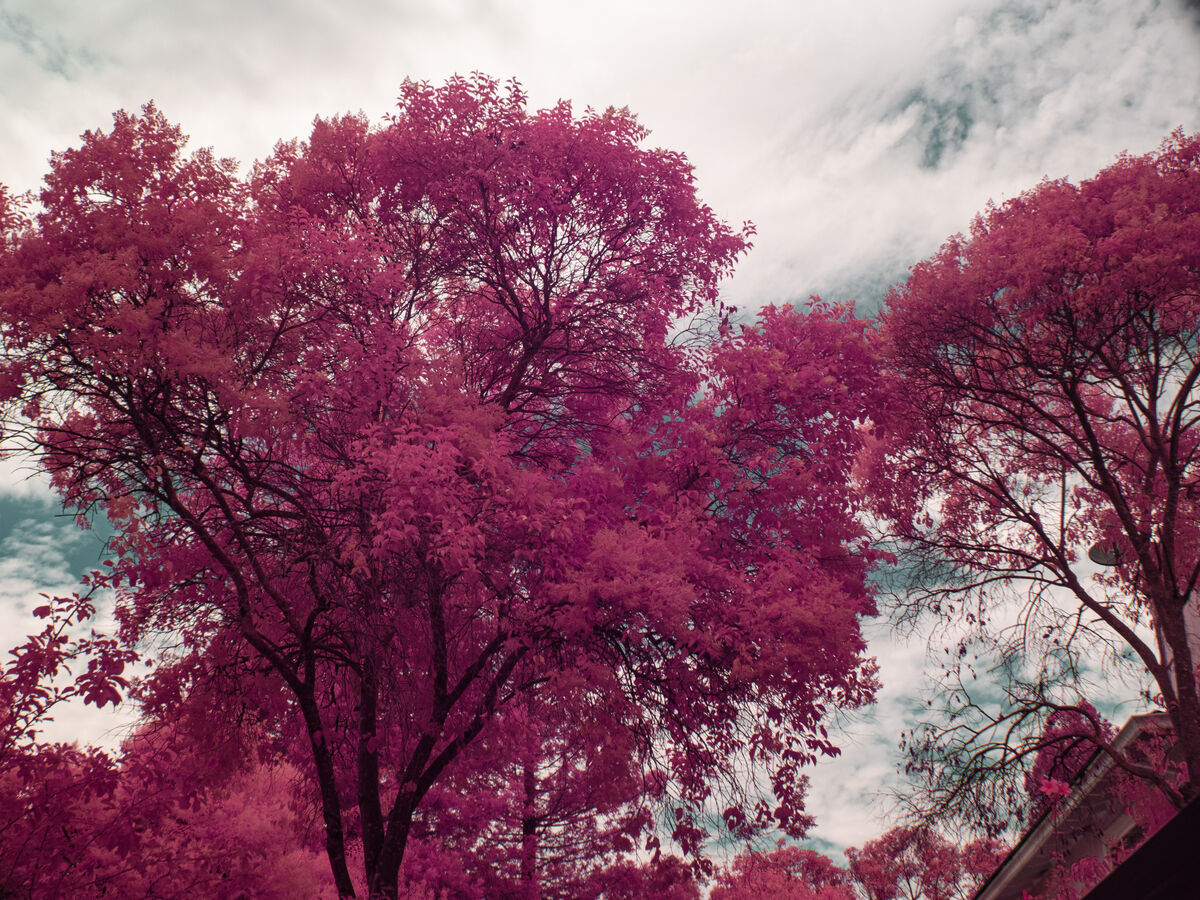Avoiding HOT SPOTS with IR-converted mirrorless cameras
Aug 11, 2022 14:12:48 #
Howdy Hoggers,
I'm currenty engaged in doing researching on purchasing a mirrorless bridge or MILC camera and having it converted for IR photography. I'm conversing with experts from LifePixel regarding the issues of "Hot Spots" which I understand that many of these models have, regarding IR image capture.
I'd like you Hoggers, who might already have gone down this IR conversion path, to chime in what your experience has been, particularly with regarding to the presence of "IR Hot Spots" in various models of mirrorless bridge or MILC cameras. How do you avoid them, if your camera model shows the defect, or is your converted IR bridge or MILC relative free of such IR defects.
Regards,
Tony Gomez
I'm currenty engaged in doing researching on purchasing a mirrorless bridge or MILC camera and having it converted for IR photography. I'm conversing with experts from LifePixel regarding the issues of "Hot Spots" which I understand that many of these models have, regarding IR image capture.
I'd like you Hoggers, who might already have gone down this IR conversion path, to chime in what your experience has been, particularly with regarding to the presence of "IR Hot Spots" in various models of mirrorless bridge or MILC cameras. How do you avoid them, if your camera model shows the defect, or is your converted IR bridge or MILC relative free of such IR defects.
Regards,
Tony Gomez
Aug 11, 2022 15:47:37 #
jscorbin
Loc: Woodinville, WA
Hot spots are not due to the camera body, but to the lens. I recently bought a Nikon Z5 for the express purpose of conversion to IR. The lens is a Nikkor 24-70 f/4 S, which LifePixel recommended for IR. Some other lenses show a hot spot, particularly at smaller apertures (f/8 to f/22) This was my fourth IR conversion, and the first with a mirrorless camera. LifePixel was helpful in recommending lenses.
I decided on a full-spectrum conversion, and use filters for various IR ranges -- including a Visible Bandpass filter for normal color photos. A disadvantage, of course, is that you need a filter for each different lens diameter. For example, my 200-500 f/5.6 Nikkor lens (with the FTZ adapter) is good for IR, but takes 95mm filters. Another approach would be to get, for example, a "Super Color" (590 nm) conversion, if that is what you might use most, and add a 720 nm lens filter for occasional use. But you couldn't do the reverse, or use a Visible Bandpass filter.
I decided on a full-spectrum conversion, and use filters for various IR ranges -- including a Visible Bandpass filter for normal color photos. A disadvantage, of course, is that you need a filter for each different lens diameter. For example, my 200-500 f/5.6 Nikkor lens (with the FTZ adapter) is good for IR, but takes 95mm filters. Another approach would be to get, for example, a "Super Color" (590 nm) conversion, if that is what you might use most, and add a 720 nm lens filter for occasional use. But you couldn't do the reverse, or use a Visible Bandpass filter.
Aug 12, 2022 05:31:30 #
sueyeisert
Loc: New Jersey
tonybear wrote:
Howdy Hoggers, br I'm currenty engaged in doing re... (show quote)
I use Fuji camera for IR. I have had Lifepixel convert one camera a Nikon and I had Kolarivision convert my Fuji.
I would recommend speaking with them. They have an extensive list of lenses good for IR. As previously states it’s the lens that’s responsible for hot spots. You want a camera that will do in camera white balance.
Read all the information given at Lifepixels and Kolarivision’s websites.
Aug 12, 2022 05:44:05 #
Jeffcs
Loc: Myrtle Beach South Carolina
Oddly less expensive older lenses seem more suited to IR
I had an Olympus Pen-F converted to full spectrum (color)
I have all pro Olympus lenses I found every one had various degrees of hot spots
Something to do with faster lenses with modern coatings
I ended up using an older design 4/3 Olympus slow zoom lens no hot spots so that lens lives on my IR-Pen-F
Check with LifePixel I think they have lists of lenses
I had an Olympus Pen-F converted to full spectrum (color)
I have all pro Olympus lenses I found every one had various degrees of hot spots
Something to do with faster lenses with modern coatings
I ended up using an older design 4/3 Olympus slow zoom lens no hot spots so that lens lives on my IR-Pen-F
Check with LifePixel I think they have lists of lenses
Aug 12, 2022 20:13:12 #
I would have thought that when you were discussing hot spots with the people at Lifepixel, they would have told you it's the lens, not the camera, that produces hot spots, and referred you to their list of lenses with no hot spots.
Aug 12, 2022 21:20:36 #
jscorbin wrote:
Hot spots are not due to the camera body, but to t... (show quote)
You don’t need a filter for each size, just the largest size you’ll use and then use step up rings. Although I probably wouldn’t use a 200-500 for IR. And since my full spectrum is a M4/3 the lenses are smaller. I have 67mm filters and use them with multiple different lenses.
Aug 12, 2022 21:20:39 #
tonybear wrote:
Howdy Hoggers, br I'm currenty engaged in doing re... (show quote)
I shot, processed, and printed B&W InfraRed film
Years later when digital was at the 12mp mark, I decided to try digital InfraRed.
I looked up LifePixal and read everything on their site, multiple times. I totally followed their recommendations, simply modified by which camera and lens I liked best (and could afford). Happened to be the Lumix G with standard zoom. It has worked perfectly; I may be lucky that other lens are OK too.
Based on what I saw on the LifePixel site in 2021, I would now:
Review their offerings on the type of conversion, chose one,
Go thru the camera/lens combinations they offer from used equipment, choose -
Check prices of buying similar equipment, but unless distinctly cheaper, buy equipment from LifePixal.
There are very few reasons to try to be smarter than the experts.
Boris
Aug 12, 2022 22:12:25 #
sueyeisert
Loc: New Jersey
SuperflyTNT wrote:
You don’t need a filter for each size, just the largest size you’ll use and then use step up rings. Although I probably wouldn’t use a 200-500 for IR. And since my full spectrum is a M4/3 the lenses are smaller. I have 67mm filters and use them with multiple different lenses.
I personally don’t like step up rings. They get jammed or stuck. Keep things as simple as possible so you enjoy the photography and don’t have to fool around with equipment.
Aug 12, 2022 22:54:10 #
sueyeisert wrote:
I personally don’t like step up rings. They get jammed or stuck. Keep things as simple as possible so you enjoy the photography and don’t have to fool around with equipment.
Well, since I use several different wavelength filters for multiple lenses they beat the money layout buying all those filters would bring. I’ve never had a problem. I’m just careful to make sure the threads are properly aligned before screwing them in. Just the fact that I’m shooting IR means I’ll be fooling around with equipment.
Aug 13, 2022 05:11:30 #
SuperflyTNT wrote:
Well, since I use several different wavelength filters for multiple lenses they beat the money layout buying all those filters would bring. I’ve never had a problem. I’m just careful to make sure the threads are properly aligned before screwing them in. Just the fact that I’m shooting IR means I’ll be fooling around with equipment.
Bingo!!
Aug 13, 2022 16:34:25 #
The best bridge camera is a Sony RX10M4 with 24-600mm lens, 20fps, 22mp. They are going to update this camera to cellphone technology along with updating software and firmware. Due in the stores October/November.
Aug 14, 2022 00:19:22 #
tonybear wrote:
Howdy Hoggers, br I'm currenty engaged in doing re... (show quote)
Are IR conversions evem done on bridge cameras? The sensor is not very accessible as it is on a camera with changeable lenses.
One piece of advice is to modify a mirrorless camera. The mirrorless can achieve perfect focus no matter what wavelengths you are using. A DSLR can be adjusted to work properly with one lens. But I prefer it to focus properly with any AF lens that the camera supports.
I have an older Sony A55 converted, but I get good focus only if I manually focus.
And I have a mirrorless Olympus EM5ii modified to full spectrum and it achieves perfect focus with all my Olympus lenses
As for hot spots, it is true that the older lenses have no hot spot issues that I am aware of. I have many older lenses, and I don't see hot spots with them. But I have to manually focus.
The one lens I use the most for IR is the Olympus 14-42mm kit lens. It is small, and I see no hot spots. I also have the more expensive 12-40mm f2.8. And with this lens, I do see hot spots. I also have the 12-100mm f4, and I intend to try it out with IR for hot spots. But it is not tiny.
If you are interested, here is a link to the B&W Forum where I walked through steps starting with a RAW to obtaining a color or B&W results. This example used a 590nm filter on a full spectrum modification.
https://www.uglyhedgehog.com/t-746810-1.html
And this link identifies a link to a site by Rob Shea who has put together a downloadable package for processing IR images. I didn't download his package, but instead used his directions to make my own and they work great in Lightroom.
Also in this link, I showed that when you use RAW images, it really doesn't matter what white balance you start with. This is not the case if you shoot JPEG by the way. I purposely used several built in white balances and showed that I can still end up with the same results.
https://www.uglyhedgehog.com/t-746058-1.html
Recently, I have been having fun with a Candy Pink look. This requires a full spectrum conversion and also requires stacking 3 filters with the result that Sunny Balance can be used, and there is no post processing needed. The results look like this straight from the camera. For this look, I used a Vivitar X1 filter (which is light YellowGreen) and a B+W KB20 filter and finally an 80B filter. 80A or 80C can be substituted and will impact the intensity of the Pink color. Notice that everything not green vegetation remains unchanged.
Note: With 3 stacked filters, to avoid vignetting, I did use larger filters with step up rings.
The 2nd image is using a filter Kolari calls a ChromeIR filter. Again, a full spectrum conversion, and no post processing, but the green grass has more of a rust look.
Adding a 3rd look. With the 3 filter stack, change the first filter from the Vivitar X1 (YellowGreen filter) to an Asanuma YG(X0) filter. Slightly different Yellow Green filter and the result is entirely different.
Aug 15, 2022 13:42:19 #
If you want to reply, then register here. Registration is free and your account is created instantly, so you can post right away.







